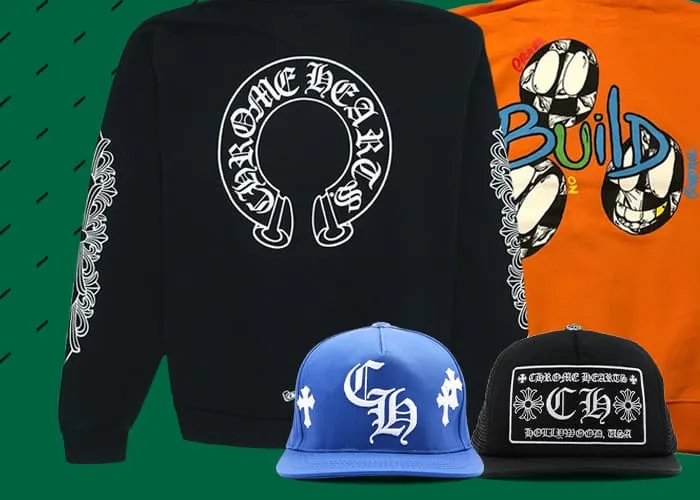
The Evolution of Denim Tears From Cultural Expression to Global Movement
- Essential Hoodie
- Shopping
- 2025-10-16
- 2087K
In the ever-shifting landscape of contemporary fashion, few brands have managed to merge cultural commentary, artistry, and apparel as seamlessly as Denim Tears. Founded by Tremaine Emory in 2019, Denim Tears stands as both a clothing label and a historical narrative — a brand that reclaims Black identity and storytelling through the language of denim, cotton, and collaboration. Its evolution over the past few years has reflected not only the growth of a brand but the unfolding of a cultural renaissance grounded in history, grief, and empowerment.
Origins: A Brand Born from Grief and Reflection
Denim Tears was not born out of a desire to chase fashion trends denim tears Instead, it emerged from personal and collective grief. Emory founded the label after the passing of his mother, channeling his pain into creative expression. The brand’s earliest works centered around themes of the African diaspora, the transatlantic slave trade, and the commodification of Black bodies — ideas expressed most strikingly through its now-iconic “Cotton Wreath” motif.This emblem, featured on jeans, jackets, and sweatshirts, represents the deep historical ties between cotton and slavery in the United States. Yet, Emory’s use of it transforms the symbol of oppression into one of reclamation and remembrance. It is both an acknowledgment of pain and a declaration of survival. Through this motif, Denim Tears became a wearable archive — a reminder that fashion can hold space for history without diluting its message.
Cultural Identity as Design Language
From the beginning, Denim Tears has blurred the boundaries between art, activism, and apparel. Emory’s designs are often accompanied by essays, photographic narratives, and collaborations with artists and historians. His collections read like cultural dissertations, exploring topics from African American music and spirituality to Pan-Africanism and the Harlem Renaissance.
For instance, his “Africa” collection and “Diaspora Tears” series celebrated global Blackness, merging motifs from the Caribbean, Africa, and Black America. Each piece carried intentionality — whether through the choice of fabric, color, or symbolism. Emory has often said that Denim Tears is less about fashion and more about storytelling. Each drop becomes a chapter, each collaboration a dialogue.
Collaborations as Cultural Bridges
Denim Tears’ evolution cannot be separated from its collaborations. Emory has masterfully used partnerships to expand the reach of his message without compromising authenticity. In 2020, Denim Tears partnered with Levi’s to release the “Cotton Wreath” 501s, an instantly iconic piece that symbolized both the brand’s ethos and Emory’s connection to American denim heritage. The partnership represented more than a product; it was a reclamation of a fabric historically tied to Black labor, now reimagined through Black creativity.
Later collaborations with Converse, Champion, and Ugg further solidified Denim Tears’ place within the fashion ecosystem. Each collaboration served a purpose beyond commerce. The Converse Chuck 70 “African Diaspora” collection, for instance, used Pan-African colors and motifs to celebrate global Black identity while honoring the sneaker’s legacy in hip-hop and youth culture.
These collaborations also highlighted Emory’s ability to navigate between high fashion and grassroots culture. His work with Virgil Abloh and Supreme — where Emory briefly served as creative director — demonstrated his capacity to bring social consciousness into the mainstream streetwear conversation without losing depth.
The Influence of Tremaine Emory and The Supreme Chapter
Tremaine Emory’s creative vision extends beyond Denim Tears. As a cultural figure, he has been deeply involved in the evolution of contemporary Black creativity, working with Kanye West, Frank Ocean, and the late Virgil Abloh. His appointment as Creative Director of Supreme in 2022 marked a turning point — a moment when one of streetwear’s most influential institutions was led by a voice rooted in Black storytelling.
While Emory’s tenure at Supreme ended in 2023 amid creative tensions, it underscored the challenges of embedding social consciousness into a corporate structure. Yet, the experience ultimately reaffirmed Denim Tears’ independence and its mission as a self-sustaining artistic platform. Emory returned his focus to his label, using the controversy as fuel for deeper introspection and creative expansion.
Art, Protest, and the Modern Archive
By 2024, Denim Tears had evolved into something far greater than a fashion brand. Its installations and fashion shows resembled art exhibits more than retail events. Emory’s use of performance and visual art turned each collection into a statement — a meditation on history, memory, and identity.
In one notable installation, Denim Tears showcased denim pieces surrounded by archival images of Black farmers and sharecroppers, creating a visual dialogue between the past and present. Such presentations emphasized Emory’s central thesis: that to wear Denim Tears is to carry history with intention.
Moreover, Denim Tears has been unafraid to engage with political discourse. Whether addressing police brutality, systemic racism, or the commodification of Black culture, the brand remains a vessel for activism. In this way, it aligns with a lineage of politically charged Black art — echoing the works of Kara Walker, James Baldwin, and Gordon Parks, but rendered through fabric and form.
Global Expansion and Cultural Legacy
As of 2024, Denim Tears has expanded beyond American borders, resonating deeply with diasporic communities worldwide. The brand’s presence in London, Lagos, and Tokyo speaks to the universality of its message: that Black history Denim Tears Sweatpants while rooted in the American experience, is a global narrative of resilience.Denim Tears’ pieces have also entered museums and galleries, blurring the distinction between streetwear and fine art. This shift mirrors a broader movement in which fashion is recognized as a medium for cultural preservation and intellectual expression. In this sense, Emory’s work represents a bridge between past and future — between pain and pride.
Conclusion: Denim Tears as a Living Testament
The evolution of Denim Tears is a testament to the power of fashion as a tool for storytelling and resistance. What began as a personal project of mourning has grown into a global movement — one that honors the complexities of Black history while envisioning new possibilities for the future.Tremaine Emory has proven that a brand can exist outside the confines of trend cycles and commercial expectations. Denim Tears reminds us that clothing can carrymeaning, that symbols can heal, and that art can liberate. In reclaiming denim and cotton — materials once used to exploit — Emory has transformed them into mediums of empowerment and remembrance.Ultimately, Denim Tears is more than a brand. It is a living archive, a cultural conversation stitched into every seam, ensuring that the stories of the past continue to breathe through the style of the present.
Leave a Reply
Please login to post a comment.












0 Comments